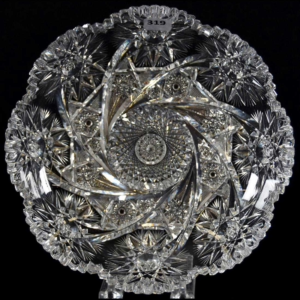Native copper stone – properties, virtues & benefits
Native Copper Stone is a rare and precious mineral with healing and energizing properties. It is used in lithotherapy to stimulate the immune system, relieve joint pain and improve blood circulation. Discover the benefits of this exceptional stone and learn how to use it in your wellness practice.
NATURAL COPPER CHARACTERISTICS
- Chakra: Solar plexus (3rd chakra).
- Properties: Stimulant, energizing, anti-inflammatory, healing, purifying.
- Astrology: Venus.
- Zodiac: Taurus, Libra, ScorPio.
- Elements: Copper.
- Colors: Reddish copper, reddish brown, golden brown.
- Hardness: 2.5-3 on the Mohs scale.
- Chemical Formula: Native copper (Cu).
- Associated god: None.
NATURAL COPPER STONE – ITS HISTORY
Copper has been a commonly used stone since its discovery, named “Aes Cyprium” after Cyprus, a major source of the metal. Copper is known for its corrosion resistance, durability and ability to form alloys with other metals, such as brass and bronze.
Although precise dating of copper use is difficult, crude copper tools and weapons were used as early as the Neolithic period, around 5,000 BC, while copper objects dating back to the 9th millennium have been discovered in Iraq. Bronze was used as early as 3,500 BC, well before the use of iron around 1,800 BC. Copper was also used in art, notably for the construction of the Colossus of Rhodes in 290 BC.
The invention of gunpowder led to intensive use of bronze and copper. Subsequently, copper was widely used in the manufacture of scientific instruments such as the compass and the balance, as well as in shipbuilding.
At the beginning of the 20th century, with the development of electricity, industry and construction, large quantities of copper were needed. Today, copper is indispensable to our society, from simple parts to advanced technological systems.

NATURAL COPPER STONE – ITS ORIGIN AND COMPOSITION
It wasn’t until 1190 that the term “copper” was adopted in France, thanks to Gautier d’Arras’ use of the word in one of his works. Originally, the term “cyprium” comes from Latin and was borrowed from the Greek “cyprios”, meaning “relative or proper to the island of Cyprus”. The name “aes cyprium” thus designated metal from Cyprus, where deposits of copper ores and raw copper were abundant. However, there were also deposits of blister copper in the booming mining region of northern Michigan, although this deposit was unknown at the time.
Natural copper, symbolized by Cu, is a crystalline metallic mineral that belongs to the category of native elements. It crystallizes in the cubic system and has no cleavage. Although it has a high density (d = 8.93), its hardness is low (2.5 to 3) and its mass is light. This opaque stone features red-hued crystals, a metallic luster and a scaly fracture surface characterized by a pale Pink color that quickly becomes bright and metallic when exposed to air.
Because of its cohesion of detrital and ramulous metallic masses, native copper is malleable, ductile and has good thermal and electrical conduction capabilities. This is why it is used in the arts and in the electrical industry. Natural copper is a cubic crystal produced by reactions between hydrothermal solutions and reducing bodies such as iron oxides from basaltic lavas. Copper crystals can reach gigantic sizes, as in the rock formations of Lake Superior in Michigan, where they can weigh over 420 tons.
Native copper is difficult to preserve due to oxidation, and most preserved samples have lost their bright red color and have tarnished and darkened. Copper has a melting temperature of around 1083°C, producing a black layer of oxides on cooling. Even on exposure to ambient air, copper oxidizes to cuprite, malachite, chessylite and lumite. Copper oxides are characterized by their coverage, but the alteration is superficial.
Copper is not soluble in water, but copper salts impart a green color to aqueous solutions, which turn dark blue in the presence of excess ammonia. Dilute hydrochloric acid is recommended for cleaning copper parts, as concentrated hydrochloric acid or concentrated ammonia will not dissolve copper. Copper is easily soluble in nitric acid, producing red nitrous vapors, or when hot in sulfuric acid, making it easy to identify and distinguish from other native minerals.
Native copper is found in the cavities and porous zones of mafic effusive rocks, which result from the extrusion of basic lavas. Although it is less present in sandstones and clay rocks traversed by hydrothermal veins, it may be the product of the reduction of copper-rich ferrous minerals. Its rather shapeless arrangement is due to chemical preciPitation. Native copper rock formations are often associated with layers or veins. The first sources were discovered through observation of valley alluvium, as in Bolivia, where regular formations of native copper can be seen amidst sands.
Native copper has been mined in depleting springs, as in England where the spring had over 9% copper in 1800 but is now depleted. Springs are becoming harder to find with copper content at 4% for “rich” springs. One of the largest native copper mines is in Chile, at Chuquicamata in the Atacama desert.
.
Native copper is widely found in the cementation zones of springs as in Cyprus, but it can also be found in old mines flooded with water laden with copper sulfates. It can form in volcanic zones, within quartz geodes or as inclusions in basalts, sandstones, limestones, slates or woody rocks. It can be associated with copper-bearing minerals, alloyed with silver in half breed, calcite, zeolites or ePidote.

NATURAL COPPER STONE – VERTIES AND PROPERTIES
NATURAL COPPER ON THE PSYCHOLOGICAL LEVEL
Copper stone is a good conductor not only of electricity, but also of etheric and psychic energy. It promotes the flow of energy through the chakras and the rise of kundalini energy, and is used by energy theraPists such as magnetizers, reiki practitioners and mediums. It is a powerful tool for meditation, aiding astral travel and divination, as well as rebalancing the emotions with the mind. It also enhances creativity and artistic intuition.
Copper stone is calming for agitated people and promotes a sense of justice. It allows one to go further in one’s ideas and reasoning, and brings harmony and love for all.
NATURAL COPPER ON THE PHYSICAL LEVEL
Native copper has antibacterial and fungicidal properties that make it effective for treating fungi in the body. In lithotherapy, it is used for its many therapeutic qualities. It relieves joint pain and helps recovery after sport. It also regulates intestinal transit, improves digestion, eliminates toxins and purifies the body. In addition, it is useful for alleviating menstrual cramps and increasing fertility.
Native copper also acts on the liver, kidneys and brain, making it a wise choice for older people looking to gain stamina, as well as for those who have trouble waking up in the morning.


